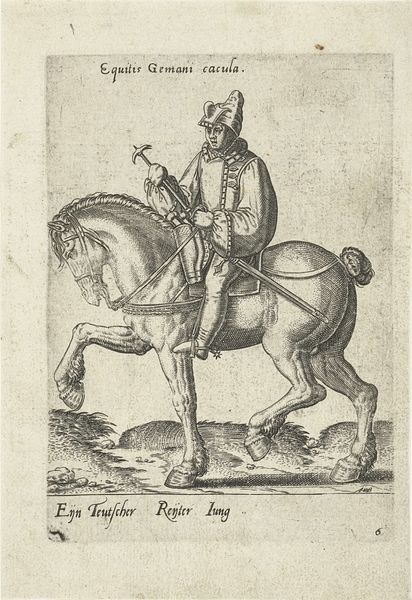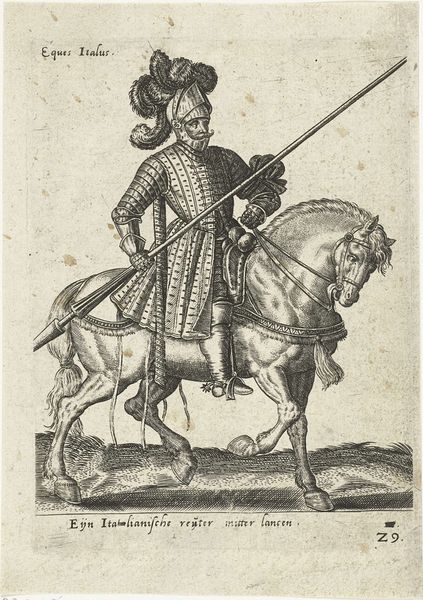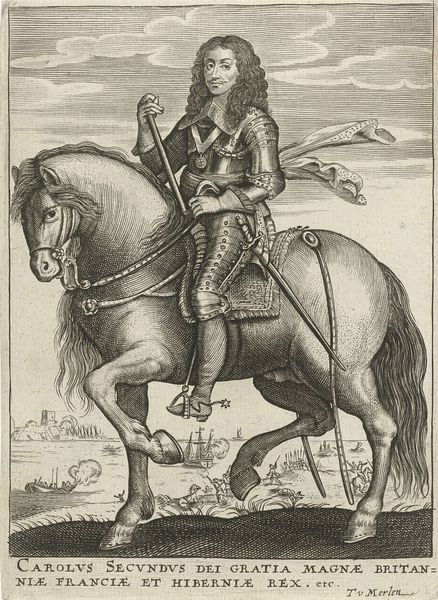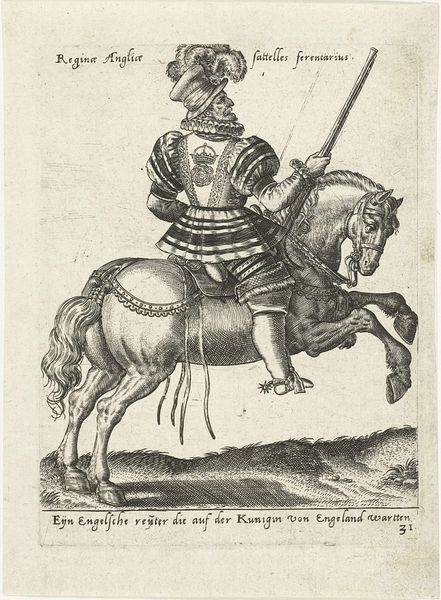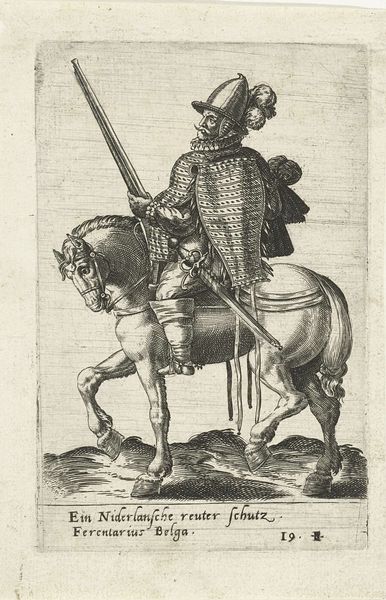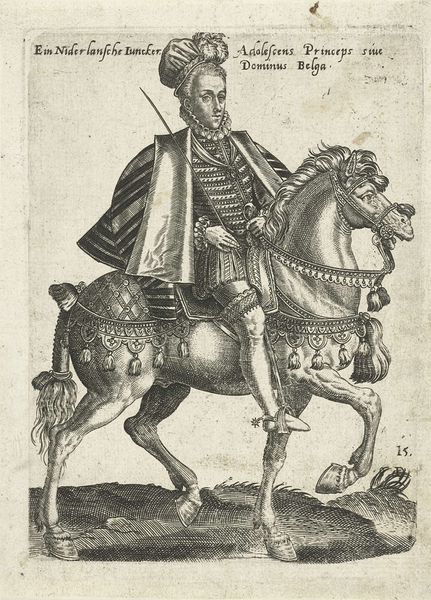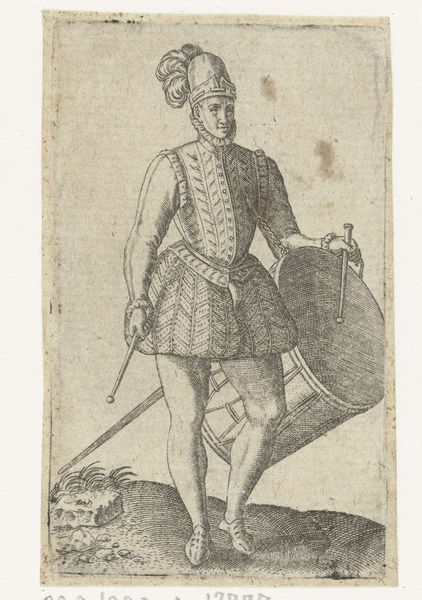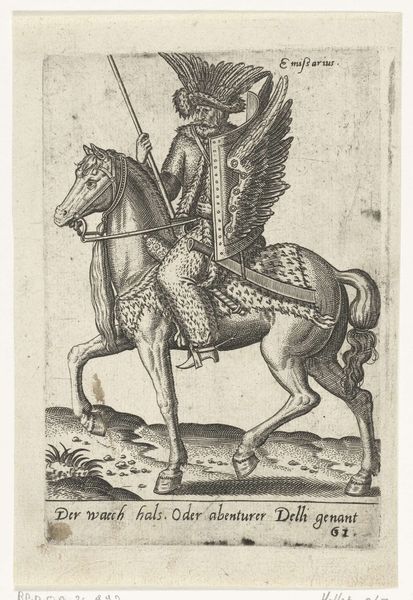
Dimensions: height 165 mm, width 116 mm
Copyright: Rijks Museum: Open Domain
Curator: Here we have "Franse edelman te paard" by Abraham de Bruyn, made in 1577. It's currently held here at the Rijksmuseum, and the medium is engraving. What are your immediate impressions of this print? Editor: It feels grand, in a strangely claustrophobic way. The detail is exquisite, almost overwhelming. There's such rigid formality to the rider and his horse, a tangible sense of aristocratic duty rendered with intense focus. But there is a lack of energy in the details, somehow. Curator: Yes, let's think about that. As an engraving, the production hinges on the skillful labor of the artist using tools to carve lines into a metal plate, transferring that image to paper through immense physical and technical precision. The resulting prints, affordable compared to paintings, circulated widely, shaping perceptions of status and power. Look at the horse, posed dynamically to showcase the figure's command. Editor: I am picturing de Bruyn's hand. Imagine the focus, the repetition in this technique of tiny deliberate actions. Each little scratch matters when translated into value or texture on the plate. Is there any symbolism inherent in the riding position, or is this simply convention? The adornment alone, both on horse and rider, gives the whole artwork a sense of show. Curator: Absolutely. Equestrian portraits like this one served as powerful visual statements, communicating nobility and military prowess. The clothing, accouterments and even the horse's tack communicate an extraordinary consumption of material resources as part of the overall aristocratic projection. This isn't just a portrait; it's a meticulously constructed image designed to convey status, authority, and wealth. Editor: I guess, reflecting on it, maybe that sense of something missing stems from its performative nature. It's undeniably impressive, but emotionally distant; all display and status. Curator: I concur. That tension between technical mastery and the ultimately propagandistic function gives this work a compelling complexity for me. We are asked to admire skill and wealth while also, perhaps, feeling a certain critical distance from it. Editor: Well, looking closely, it seems less removed, more about our own engagement with past craft. That fine line between observation and interpretation continues to evolve for me as I learn more about it.
Comments
No comments
Be the first to comment and join the conversation on the ultimate creative platform.

